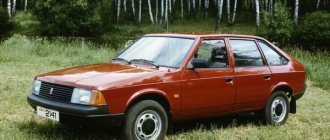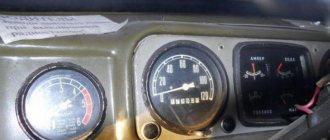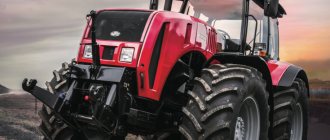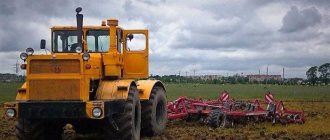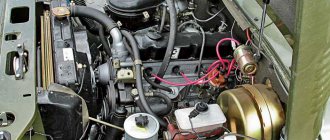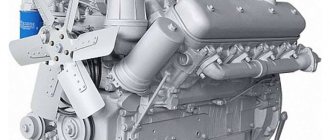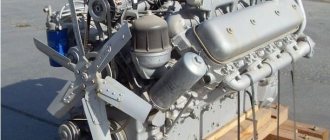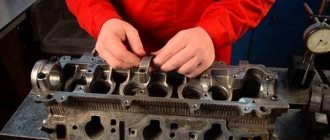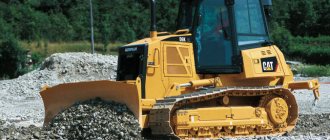- home
- Media center
- Articles
- Fuel consumption ZIL 130
Menu
- News
- Articles
- Video materials
- Photo materials
- Publication in the media
- 3D tour
29.06.2020
Production of the legendary car began in 1952. Today it is considered one of the most successful cars of the domestic plant. The question of what is the consumption of ZIL 130 per 100 km is relevant at the present time, since the car is actively used in economic activities.
Design Features
Before studying how much fuel is needed per 100 kilometers, it is advisable to learn more about the design of the ZIL 130. During the production of the first cars, the model was equipped with a powerful 8-cylinder engine, which is why the consumption of expensive fuel ZIL 130 per 100 was too big. Each modification is equipped with power steering and a 5-speed gearbox. A-76 fuel is used for operation.
Below are published figures with fuel consumption ZIL 130 per 100 kilometers when operating in various conditions:
- Consumption on the highway: 25 l;
- Consumption in the city: 35 l;
- Combined cycle consumption: 30 l.
The data is presented approximately and now it’s worth figuring out how true it is.
Video about creating a car
Soon, 5 copies of the ZIL-130 were produced, which were subsequently transferred to the Yaroslavl tire plant. In 1963, mass production of the model began. It was then that her first recognition came to her. At the International Fair held in Leipzig, the domestic truck took first place.
The production technology and design of the ZIL-130 brought a lot of things to the Soviet automotive industry that drivers had never even dreamed of before. Thus, the truck was equipped with a synchronized gearbox with helical gears that have constant mesh, power steering, a three-seat operator’s cabin (previous models came with a two-seat operator’s cabin), an engine pre-heater, new-design driveline joints and a windshield washing system. The car had a rear-wheel drive, front-engine layout.
Many admired the unusually beautiful exterior design of the ZIL-130 for that time. The car received an “alligator-type” hood, a white or light gray expressive radiator grille, streamlined fenders complemented by smooth rims and panoramic windshields.
However, the model also had serious shortcomings. Among them were driveshaft joints that were unstable to loads and regular electrical failures. Gradually, the manufacturer managed to get rid of them, which further increased the popularity of the ZIL-130. As a result, the truck received a national quality mark and began to be produced for export.
The ZIL-130 remained unchanged on the production line until 1976. The model was supposed to be replaced by the ZIL-170, but production of the receiver began at the Kama Automobile Plant. The Moscow Automobile Plant remained with the previous modification, after which they decided to modernize it. The model's carrying capacity was increased to 6 tons. The design has also been improved. Minor changes occurred in the radiator lining, sidelights and headlights swapped places (the former became white and orange). The improved modification was named ZIL-130-76.
Production of the truck finally ended in 2010.
How much fuel does ZIL need?
The high fuel consumption of the ZIL 130 dump truck per 100 kilometers is primarily due to the technical parameters of the vehicle. According to officially stated information, costs are 31.5 liters per 100 km. These values appear in all documents supplied with the car. They are also present in the vehicle upon purchase.
But it should be noted that such indicator values correspond to reality only if the dump truck is not overloaded. Also, they are only suitable for a situation with a fully functional car, when it is in proper technical condition. In practice, such conditions are not always met, so the question of what fuel consumption for a ZIL 130 car per 100 km in reality remains relevant.
Engine
Under the hood of the first modifications of the ZIL-130, a 4-stroke 6-cylinder V-shaped unit of medium volume, designed for gasoline, appeared. The carburetor of the falling-flow engine was distinguished by the presence of an acceleration pump and a pneumatic centrifugal speed controller. Two economizer valves were installed on it. The power plant had a low degree of unification. Motor parameters of the ZIL-E130 model:
- working volume – 5.2 l;
- rated power - 135 hp;
- rotation speed – 3200 rpm.
Road tests showed that the technical parameters of the unit were not enough for normal operation of the machine. As a result, in subsequent versions a more powerful version appeared - an 8-cylinder 150-horsepower engine with a volume of 5.99 liters.
The engines had a combined lubrication system: splash and pressure. It included fine and coarse filters housed in one housing. The power plant had a forced power supply system with fuel supplied by a fuel pump.
The crankcase ventilation system was a closed valve type. The cooling system is closed, liquid, with forced circulation of liquid.
Increased rate
There are a number of circumstances that can increase the final fuel consumption by 100 km, which means it will lead to additional financial costs. The first circumstance is the season of use: with the onset of the cold season, the engine begins to consume more fuel than in spring and summer. In winter, the engine requires more energy to warm up and maintain temperature conditions.
Now we can consider how the cost of ZIL 130 fuel consumption increases in reality:
- the change in the southern regions is small and rarely exceeds 5%;
- in temperate climates, the increase in consumption is 10% more;
- when moving to more northern areas - 15%;
- in Siberia and the Far North - 20%.
Based on the above data, it will not be difficult for each owner to calculate what fuel consumption on a ZIL-130 can be expected with the onset of winter. So, for example, in a temperate climate with an established norm of 31.5 cubic meters, in the cold season the figure will increase to 34.5.
The second aspect that contributes to an increase in the indicator is engine wear. In this case, statistics assume the following data:
- a new car with a mileage of up to 1000 km – an increase of 5%;
- for each subsequent 1000 km there is an increase of 3%.
An equally important factor is the specifics of the area where the ZIL 130 is used. The consumption rate on a high-quality highway is less than the established norm and varies in the range of 28-32 liters every 100 km. Thanks to the prepared surface, the driver makes fewer stops and can gain a stable speed while driving without excessive load on the engine. Most often, trucks move along highways and over long distances.
According to experienced drivers, the consumption rate begins to increase when driving in the city. You have to perform endless maneuvers, stop at traffic lights and let pedestrians pass, and observe a low speed limit. On average, the figure increases to 38-42 liters per 100 km.
ZIL 130 owner reviews about consumption
Ruslan, Leningrad region
I bought a ZIL produced in 1993 and drove it for 5 years. Fuel consumption was 30-35 liters per 100 km, but when loaded the engine consumed 5-7 liters more than when the body was half empty.
I drive a ZIL-130, manufactured in 1995, I keep an eye on the condition of the car, fortunately it’s easy to sort through the engine in the garage with my buddies, and getting a spare part is not a problem. The engine is gasoline; on the highway, with a load of 6 tons, it consumes 25 l/100 km; when driving around the city, it requires 30 l/100 km. The hardest thing is off-road - there it reaches 35 l/100 km.
I was warned about the gluttony of the gasoline engine when I was planning the purchase. I didn’t listen, and later discovered that a loaded dump truck consumes up to 40 l/100 km. I freaked out and installed a diesel engine. I have never regretted it - in 7 years it has paid for itself more than once, because... consumption is now a maximum of 25 liters of diesel fuel.
I bought a ZIL-130 1991 specifically to service a construction site. The original gasoline engine on the 92 worked flawlessly, even if it had to pull 8 tons. I didn’t like the gas mileage, so I installed the MT3-80 diesel. Now it consumes a maximum of 20 l/100 km, while the load capacity remains the same.
I live in a rural area, I have my own farm, so a truck is necessary. I bought a 130 model with a 130I engine to run on both gas and gasoline. It consumes more gas - 34-36 liters, but it also costs less. If you fill with 92 gasoline, it comes out to 30-32 liters per 100 km.
Source
How to save fuel
Gradually, prices for diesel and gasoline are increasing, which cannot but have a negative impact on the budget. Some drivers, in order to save money, try to come up with tricks to help save on fuel. A car “eats” a lot, so switching to gas also does not give effective results.
Among the main tricks, the following options are noted:
- ZIL consumes less fuel in good technical condition. Therefore, it is recommended to pay attention to the engine, carburetor, ignition system and replace it if necessary. Material costs will pay off over time.
- In winter, you can save on fuel if you spend more time warming up your car.
- Driving style. It is recommended to avoid sudden movements and aggressive maneuvers. When driving at high speed, fuel volumes also decrease. However, it is important to remember to comply with traffic rules.
- It is recommended to avoid traveling in densely populated areas. In such an area, consumption increases by 15-20%.
Subject to the established rules, every ZIL owner will save money and also maintain the technical condition of the car at the required level. This way you can vary the fuel consumption of the ZIL 130.
Engine for a ZIL 130 car: characteristics, malfunctions and tuning
Nowadays you can find a huge amount of goods. It can be divided not only by quality, but also by cost. It is worth noting that this also applies to the automotive market. And this is quite natural. After all, every manufacturer wants to make a huge profit from sales and invest less money. During the Soviet era, the ZIL 130 engine, which was distinguished by its good strength and durability, gained enormous popularity.
Many drivers said that this is simply an indestructible unit that does not require much attention. The first vehicle with the ZIL 130 engine was released at the beginning of 1962. This was the first truck to roll off the Moscow assembly line.
Characteristics
As a result, the basic characteristics of the car were improved in many ways, the cross-country ability and load-carrying capacity were increased due to the new frame structure and improved engine, the driver’s workplace, together with the cabin, acquired the first signs of ergonomics.
First, check the air filter. Take it off and look at the light. If the filter does not transmit light at all, it must be replaced. A clogged filter is unusable; it restricts the air flow entering the engine, causing significantly more fuel to be burned.
Replace engine oil with a lighter one, based on synthetics and semi-synthetics. Compared to traditional viscosity oils, this oil will reduce fuel consumption by 6%. Check your tire pressure, as underinflated tires increase rolling resistance, which in turn wastes too much fuel. Measure the pressure only when the tires are cold. If it is 0.3 bar higher than normal, this will help to save more.
Avoid braking too hard. This increases the load on the machine components, which also increases fuel consumption. Pay close attention to the situation on the road so that you can slow down at the right time. Fuel is also wasted on excessively abrupt starts, because too large portions of fuel are supplied to the cylinders. Drive away smoothly. At low speeds, do not use higher gears. This will also significantly increase savings.
When the air conditioner is turned on, it consumes from 5 to 20% of fuel. It is better to open the windows slightly if possible. Although this will not save you from the dust outside, and the cabin will be hotter than when the air conditioner is running, but at a critical moment you will be able to hold out until refueling.
Make sure your car is in good condition. Malfunctions in the ignition system, dirty spark plugs, poor wiring - this is a loss of 30-40% of gasoline. If you yourself are not well versed in technology, turn to professionals. After all, the fight against great “gluttony” can only be done with a serviceable and well-oiled machine. When driving, you should not scrape the friction linings of the brake pads on the drums and discs while idling. The chassis bearings must rotate easily, the power and ignition systems must be adjusted, and the compression in the engine cylinders must be normal.
Description
The ZIL 130 engine was installed on all trucks, both ZIL 130 and ZIL 131. And this is not surprising. After all, if you look at the design, the ZIL 131 engine is very similar to the standard ZIL 130 engine.
These units had a small degree of unification. To put it simply, the power unit from the Zil 130 was slightly reduced in volume, to 6 liters, which made it possible to obtain lower fuel consumption. The power unit also received a two-chamber carburetor system and a special speed limiter.
The more powerful engine is the ZIL 375, which has a volume of about seven liters. This type of machine is mainly used at the Ural Automobile Plant. Thanks to this, it was possible to obtain an increased cylinder radius and piston stroke.
Technical characteristics in comparison. Advantages and disadvantages
| ZIL 130: technical characteristics, fuel consumption per 100 km, body lifting system - design, weight, dimensions For its time, the basic ZIL-130 was a fairly powerful car, and this is due to the fact that the ZIL 130 has such high fuel consumption per 100 km. On civilian vehicles, a one-piece windshield was used; on vehicles for the army, a version of two halves could be installed, unified with the ZIL-131. |
First, check the air filter. Take it off and look at the light. If the filter does not transmit light at all, it must be replaced. A clogged filter is unusable; it restricts the air flow entering the engine, causing significantly more fuel to be burned.
Replace engine oil with a lighter one, based on synthetics and semi-synthetics. Compared to traditional viscosity oils, this oil will reduce fuel consumption by 6%. Check your tire pressure, as underinflated tires increase rolling resistance, which in turn wastes too much fuel. Measure the pressure only when the tires are cold. If it is 0.3 bar higher than normal, this will help to save more.
Avoid braking too hard. This increases the load on the machine components, which also increases fuel consumption. Pay close attention to the situation on the road so that you can slow down at the right time. Fuel is also wasted on excessively abrupt starts, because too large portions of fuel are supplied to the cylinders. Drive away smoothly. At low speeds, do not use higher gears. This will also significantly increase savings.
When the air conditioner is turned on, it consumes from 5 to 20% of fuel. It is better to open the windows slightly if possible. Although this will not save you from the dust outside, and the cabin will be hotter than when the air conditioner is running, but at a critical moment you will be able to hold out until refueling.
Make sure your car is in good condition. Malfunctions in the ignition system, dirty spark plugs, poor wiring - this is a loss of 30-40% of gasoline. If you yourself are not well versed in technology, turn to professionals. After all, the fight against great “gluttony” can only be done with a serviceable and well-oiled machine. When driving, you should not scrape the friction linings of the brake pads on the drums and discs while idling. The chassis bearings must rotate easily, the power and ignition systems must be adjusted, and the compression in the engine cylinders must be normal.
Service
In this section it is worth talking about changing the oil. This process is very easy to do.
To do this you should:
- Unscrew the drain plug;
- Unscrew the oil filter plug and drain the oil;
- Unscrew the nut and remove the oil filter cover;
- Remove the metal and rubber seal;
- Remove the oil filter and remove the rod;
- The filter should be changed in the reverse order;
- Fill in the oil and let the power unit run for 5 minutes;
- Check the oil level using the dipstick and top up if necessary.
